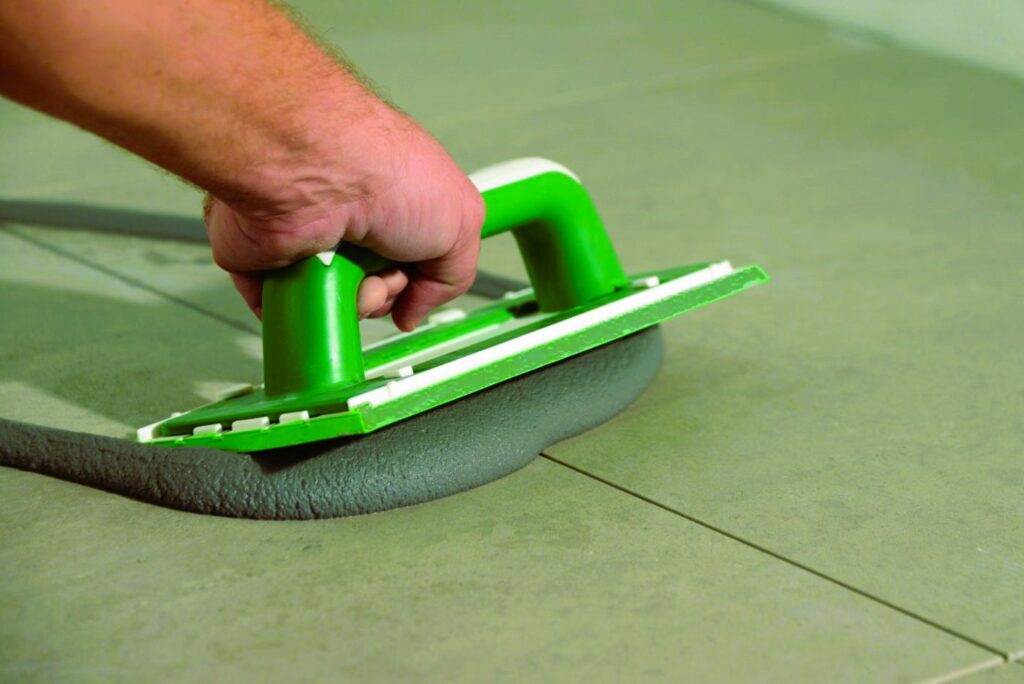
When it comes to tile installations, grout plays a crucial role not only in the structural integrity but also in the overall aesthetics of the finished project. Grout is the material that fills the gaps between tiles, providing stability and preventing moisture intrusion. However, its impact goes beyond functionality. The color, type, and maintenance of grout can significantly influence the visual appeal and durability of tiled surfaces. In this article, we will explore the importance of grout in tile installations and its impact on both aesthetics and durability.
- Aesthetic Considerations:
Grout color selection can dramatically affect the appearance of tiled surfaces. A contrasting grout color can create a bold and eye-catching design statement, while a matching color can create a seamless and uniform look. It’s important to consider the desired effect and the overall style of the space when choosing grout color. Additionally, grout lines can be adjusted in width to create different visual effects. Narrow grout lines create a more contemporary and sleek look, while wider grout lines give a more traditional and rustic feel.
- Grout Type and Durability:
The type of grout used in a tile installation can have a significant impact on its durability and longevity. There are three primary types of grout: cementitious grout, epoxy grout, and urethane grout. Cementitious grout is the most commonly used and is suitable for most applications. It is affordable and easy to work with but may require sealing to prevent staining. Epoxy grout, on the other hand, is highly durable, stain-resistant, and less prone to cracking, making it ideal for high-traffic areas and wet environments. Urethane grout offers similar benefits to epoxy grout and is also flexible, making it resistant to cracking. However, epoxy and urethane grouts are more expensive and require professional installation.
- Sealing and Maintenance:
Proper sealing and maintenance of grout are essential for preserving its appearance and durability. Grout is porous, which means it can absorb moisture, dirt, and stains if left unprotected. Sealing grout with a penetrating sealer creates a protective barrier that helps repel liquids and prevents discoloration. The frequency of resealing depends on the type of grout and the level of wear and tear it experiences. Regular cleaning with mild, non-abrasive products is also crucial to prevent grout from becoming discolored or dirty over time. Proper maintenance ensures that the grout retains its original color and remains resistant to mold and mildew growth. If you want to make an eco-friendly choice for a greener home, read the Green Renovation article.
- Installation Techniques:

The installation techniques used during the grouting process can impact both the aesthetics and durability of the tiled surface. Proper grout application involves filling the gaps between tiles evenly and ensuring that the grout lines are straight and consistent in width. The excess grout should be cleaned off the tile surfaces promptly to avoid staining. Care should also be taken to avoid over-washing the grout during the cleaning process, as this can weaken its integrity. Following manufacturer guidelines and employing skilled professionals for the installation can help achieve optimal results.
Conclusion:
Grout is an essential component of tile installations that goes beyond its functional purpose. The color, type, and maintenance of grout significantly impact the overall aesthetics and durability of tiled surfaces. Careful consideration should be given to grout color selection, grout type, sealing, and maintenance to achieve the desired visual appeal and longevity of the installation. By understanding the impact of grout on tile aesthetics and durability, homeowners and designers can make informed choices that enhance the beauty and performance of their tiled spaces.
For more information on tile installations and grout, visit the following resources:
- Wikipedia: Grout (https://en.wikipedia.org/wiki/Grout)
